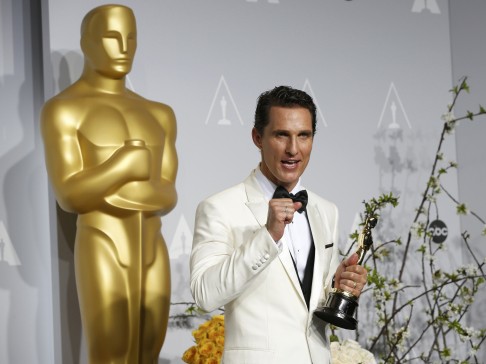
Movie Reviews: Three Oscar-nominated Best Pictures
By now you must have heard: 12 Years a Slave won best picture at this year’s Academy Awards. The historical drama by British director Steve McQueen (Shame, Hunger) lays bare the blood, sweat and tears of Southern slavery in the mid-19th Century, and all the terror and inhumanity that came with it.
12 Years a Slave
By now you must have heard: 12 Years a Slave won best picture at this year’s Academy Awards. The historical drama by British director Steve McQueen (Shame, Hunger) lays bare the blood, sweat and tears of Southern slavery in the mid-19th Century, and all the terror and inhumanity that came with it.
The film is an adaptation of the 1853 memoir of the same name by Solomon Northup, a free black man from New York who was kidnapped and sold into slavery in Louisiana. There, he worked on various plantations for 12 years before he was finally rescued and returned to his family in the North. Northup’s accounts were so gruesome that they would make Stephen King’s horror novel Misery read like Dr. Seuss.
Nigerian-British actor Chiwetel Ejiofor plays the protagonist Northup with conviction and authenticity. Every whiplash he takes, every backbreaking day he gets through, and every rape and murder he witnesses shows up on his face. Our hearts sink with his each time an attempt to escape fails. We feel his anguish and restraint in trying to maintain a quiet dignity in the face of gross injustice.
Ejiofor is supported by a talented cast, including Irish-German actor Michael Fassbender who plays a drunken, sexually frustrated slave owner, and Kenyan-born actress Lupita Nyong'o, a first-time actress who won an Oscar for her supporting role in the film. The only exception to the otherwise impeccable cast is Brad Pitt. Sporting an uneven Southern accent and shoulder-length golden locks that drape to his shoulders, Pitt sounds and looks out of place playing a free-thinking laborer from Canada who eventually saves the day.
12 Years a Slave is neither the best movie in 2013 nor the best slavery movie ever made. But it is a strong contender in both categories. It is an uncompromising – but at times overly indulgent – portrayal of the suffering of a people who built a nation but reaped none of the rewards. In the process, the movie has made international stars of Ejiofor and Nyong'o, who will no doubt go on to make other great movies when the right scripts come along.

Dallas Buyers Club
Films about the AIDS epidemic in the 1980s have always been a risky proposition for Hollywood studios. The subject matter is depressing and the characters are either dying or will eventually die. No matter which way you slice it, it is pretty heavy stuff. Because of that, these films are rarely screened in big multiplexes but only in small theaters at LGBT film festivals. Jonathan Demme’s Philadelphia is one of the very few exceptions that have achieved box office success.
Dallas Buyers Club faces the same challenge. The movie almost didn’t get made. No one was willing to bankroll the project before little known French-Canadian director Jean-Marc Vallée took it on and agreed to shoot it on a meager US$5 million budget. Similarly, the script was passed around like a hot potato: Woody Harrelson, Brad Pitt and Ryan Gosling were all considered for the lead role but showed little interest until it eventually went to Texas native Matthew McConaughey.
The story is based on real-life character Ron Woodroof, a rodeo cowboy who is diagnosed with AIDS and given a month to live. He quickly discovers that only patients selected for clinical trials have access to the latest drugs and that the sale of non-FDA approved medication – even vitamins and protein shots – are illegal. With the help of Rayon, a transgender junkie, Woodroof sets up the Dallas Buyers Club to dispense alternative medication by charging AIDS patients a monthly membership fee rather than selling drugs to them outright.
There has been a lot of buzz about McConaughey’s dramatic weight loss. The actor reportedly shed 47 pounds and secluded himself for six months to prepare for the role. But his performance – a career best – is so much more than the physical transformation he underwent. McConaughey lost half his muscle mass but became twice the actor he was, bringing to life an improbable hero who is bigoted and opportunistic in one light but vulnerable and compassionate in another. Ron Woodroof is the sum of all the characters McConaughey has played in the last 20 years, and the sum is far greater than its parts.
Then there is Jared Leto. The 42-year-old reinvented himself from a B-list pretty boy to a character actor with astonishing grit. His portrayal of Rayon is, in the word, flawless. The unsung heroine shrugs off insults and adversity with dignity and a sense of humor; her inner strength belies her turquoise eye shadow and tongue-in-cheek coquetry. She supplies the sassy yin that balances Woodroof’s redneck homophobic yang. Without Rayon, the two-hour movie about the AIDS epidemic would have been just that: a two-hour movie about the AIDS epidemic. But instead, the screen lights up whenever the odd couple shares the same scene, whether it is playing cards on the hospital bed, bickering in their "home office" or simply buying groceries at the supermarket.

The Wolf of Wall Street
The Wolf of Wall Street is based on Jordan Belfort’s memoir of the same name. Founder of brokerage firm Stratton Oakmont, Belfort was convicted of securities fraud and money-laundering in 1998. The snake oil salesman spent two years in prison and is now an author and motivational speaker.
Perhaps because I work in the securities industry, I find the film clichéd and only mildly entertaining. Running nearly three hours, it assaults the audience with scene after repetitive scene of men throwing wads of cash in the air and having group sex with hookers. Remember Wall Street, American Psycho, Working Girl and Barbarians at the Gate? Been there, seen that. I wish I had a fast forward button.
Scorsese also makes a caricature of the financial industry. The film is the way people on Main Street think of people on Wall Street. Overall, it feels like an opportunistic attempt by the studio to capitalize on the anti-banker sentiment of late with an in-your-face satire about high-rolling stockbrokers. Curiously enough, however, Scorsese ends up glorifying Wall Street excesses rather than condemning them. In the film, Belfort is a con artist who takes good care of his people and refuses to rat them out to the FBI. Love him or hate him – it appears that the director can’t make up his mind.
Leonardo DiCaprio plays the anti-hero, a Jay Gatsby who snorts cocaine and uses the f-word in every sentence. This Jordan Belfort wears the same tailored suits, throws the same lavish parties and lives in the same Long Island mansion as Gatsby does. Despite the passion he pours into his character, DiCaprio is upstaged by Jonah Hill, who delivers a more memorable performance as Belfort’s sidekick Donnie Azoff. Hill gives the role his all: he overdoses on expired drugs, chokes on cold cuts, masturbates in public and even swallows a goldfish whole.

